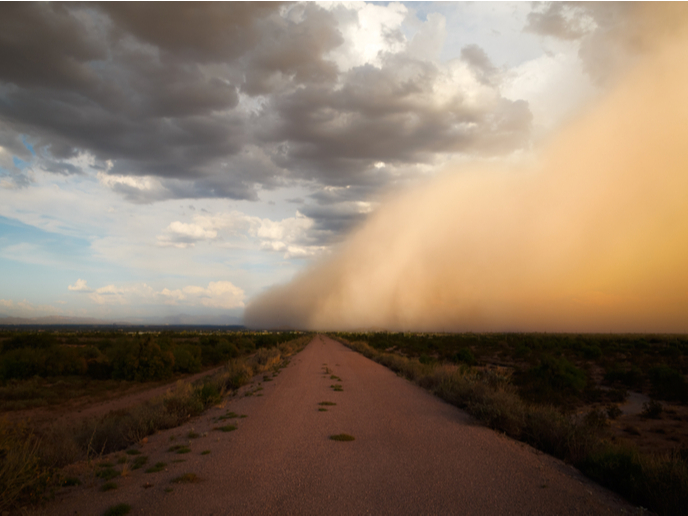How dusty was Europe during the coldest periods of the most recent Ice Age?
Earth has experienced dramatic climatic changes in the last 25 000 years. Its most recent glacial period peaked 21 500 years ago, during the Last Glacial Maximum (LGM) – the most recent time during this glacial period when ice sheets covered huge parts of the planet and greatly affected climate. Now scientists have found that huge dust storms swept across Europe during the coldest periods of the LGM, often covering the western part of the continent in some of the thickest layers of Ice Age dust found on Earth. The findings are explained in a study published in the journal ‘Quaternary Science Reviews’. With support from the EU-funded TiPES project, the scientists obtained these results using new estimates of the sedimentation and mass accumulation rates of European loess layers. Loess is a sedimentary deposit of fine, silty material that is mostly transported by the wind from dry, barren areas. The team first investigated the loess layers from Nussloch, Germany. As reported in a news release posted on the ‘EurekAlert!’ website, darker layers of palaeosol were found to alternate with the loess layers, each layer representing a shift in climatic conditions. “At Nussloch the paleosols stem from periods of milder climate, called interstadials during the ice age. The aeolian layers were deposited during the cold periods and consist mainly of dust and silt from the dry riverbeds of the Rhine river,” the news release goes on to explain. Palaeoclimatologists traditionally believed that interstadial palaeosols accumulated on top of the underlying aeolian layer during milder climatic periods that helped plants and animals to thrive in the region. However, meticulous sampling combined with carbon-14 and luminescence dating of the Nussloch loess sedimentation has dispelled this previously held belief. The research team found that in Europe, palaeosols didn’t accumulate on top of the aeolian layer but developed downward into its upper part. The study was expanded to other European records by comparing sedimentary strata with Nussloch. “In Europe, the paleosols are being embedded in the aeolian deposits. And when you are considering this, you have to take into account the thickness of the paleosol when you evaluate the dust deposition. Then we found aeolian accumulation and sedimentation rates which are much more precise than they were previously,” observes the study’s first author Denis-Didier Rousseau of the École normale supérieure, France, in the same news release.
Dustier than China
Finally, estimates of European loess layers were also compared with those of Chinese loess layers. The comparison revealed that Europe was three times dustier than China during the LGM. “However, proposing a dustier Europe does not imply that the dust storm frequencies were higher in Europe but rather the dust amount emitted during one particular dust storm in Europe was higher than in Asia,” the authors clarify in the study. The study’s findings could help to increase insight into climate tipping points, which are the focus of TiPES (Tipping Points in the Earth System). The 4-year project is coordinated by the University of Copenhagen. For more information, please see: TiPES project website
Keywords
TiPES, loess, aeolian, Ice Age, dust storm, glacial period, Last Glacial Maximum



